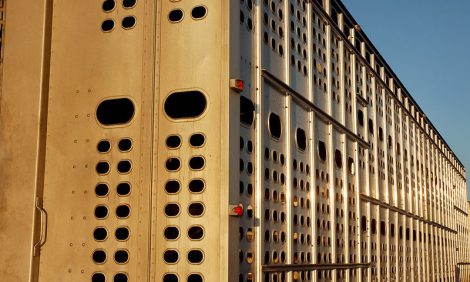



Russian Livestock and Products Semi Annual 2009
Average retail prices for meat and poultry in Russia increased by more than 23 percent in 2008 while the increase in overall food prices jumped nearly 18 per cent, according to the USDA Foreign Agricultural Service.Meat market analysts expect this trend to continue in 2009 as the Russian government continues to take protectionist measures to limit imports of meat and poultry. According to the Russian State Statistic Service (Rosstat) average retail prices for meat and poultry increased in Russia by more than 23 percent in 2008 while the overall growth of food prices in general jumped by nearly 18 percent. Demand for beef and pork is expected to decrease due to higher prices as Russian consumers begin substituting them for cheaper proteins such as chicken meat and eggs.
The Russian government continues to implement protectionist measures against imported agricultural products such as increasing import duties on butter, soybean meal and dry milk powder, using tariff rate quotas to limit meat and poultry imports, delisting U.S. and European Union meat and poultry plants ostensibly for not meeting Russian requirements and other such actions. Alongside the protectionist climate in Russia, the Russian Ruble decreased by 35 per cent against the U.S. Dollar during the last 6 months making imported agricultural products much more expensive. All of these factors are leading to higher prices throughout the production/import/wholesale trade/retail trade chain.
Incomes Falling, Prices Rising
Rosstat figures demonstrate that disposable income grew just 2.7 per cent in 2008 after jumping 12.1 per cent in 2007. In addition, Rosstat reported that inflation in January 2009 reached 2 per cent with much of it attributed to the rise in meat and poultry prices. 2008 poultry and meat price growth were the most significant compared to other food products (table 1).
The Russian government continues to implement protectionist measures against imported agricultural products such as increasing import duties on butter, soybean me al and dry milk powder, using tariff rate quotas to limit meat and poultry imports, delisting U.S. and European Union meat and poultry plants ostensibly for not meeting Russian requirements and other such action. Along side the protectionist climate in Russia, the Russian ruble decreased by 35 per cent against the U.S. dollar during the last 6 months (1 USD = 23 Rubles in Sep 08 compared to 36 Rubles in Mar 09) making imported agricultural products much more expensive. All of these factors are leading to higher prices throughout the production /import/wholesale trade/retail trade chain.
Ministry of Agriculture officials have publically vowed to limit meat and poultry imports in order to protect domestic meat and poultry producers during the global financial crisis. Outgoing Minister of Agriculture Aleksey Gordeyev has accused imported meat shipments on numerous occasions of driving down farmgate pork prices and expressed the need for serious measures to limit meat imports even if it means increasing prices for Russian consumers. A major cause of concern of Russian government officials is the ability of new pork and poultry producers to repay their subsidized loans financed under the National Priority Project for Agriculture.
Increasing beef and pork prices will likely lead many Russian consume rs to substitute more expensive red meats for poultry meat and eggs. Demand for pork is lower than for poultry and some importers are switching from buying hams and other premium cuts to cheaper pork offals and trimmings which are growing more popular with consumers who watch food prices rise on a monthly basis. With rising demand for poultry in 2009, prices are expected to go up for both domestic and imported products.
Red Meat Wholesale Prices
Domestic beef wholesale prices increased by 34 per cent in December 2008 over a 12-month period while imported beef prices jumped 36 per cent. Domestic pork prices increased 33.5 per cent while imported pork increased by only 26 per cent. Most of growth occurred in the second half of 2008. High than usual over quota pork and beef imports in 2008 did not stop prices from growing at tremendous rates.
Red Meat Retail Prices
Retail prices for beef and pork increased even higher in comparison with wholesale prices in 2008. The prices for frozen pork and frozen beef jumped by 30 per cent and 35 per cent respectively in 2008 in Moscow region open air markets and hypermarkets. Price increases of chilled pork and beef jumped about the same level during 2008 as well.
Meat Prices Expected to Rise in 2009
Retailers and traders that attended the XIV International Summit of Leaders of the Food Market in Moscow in early February 2008 said that food product prices will likely grow by 25-40 percent in 2009. Minister of Agriculture Gordeyev recently stated that he expects to see new pork and poultry projects continue in 2009 even as market analysts predict a major decrease in domestic production resulting from the financial crisis. Gordeyev optimistically stated that in a couple of years, Russia may “overproduce” poultry meat and eggs making it necessary to introduce production quotas to help keep prices at certain appropriate levels for producers.
Further Reading
| - | You can view the full report by clicking here. |
List of Articles in this series
To view our complete list of Livestock and Products Annual, and Semi-Annual reports, please click hereMarch 2009


